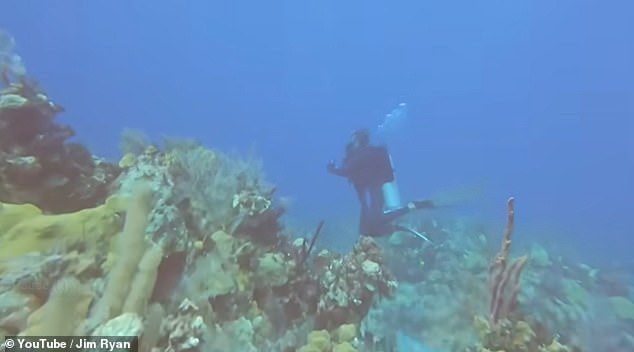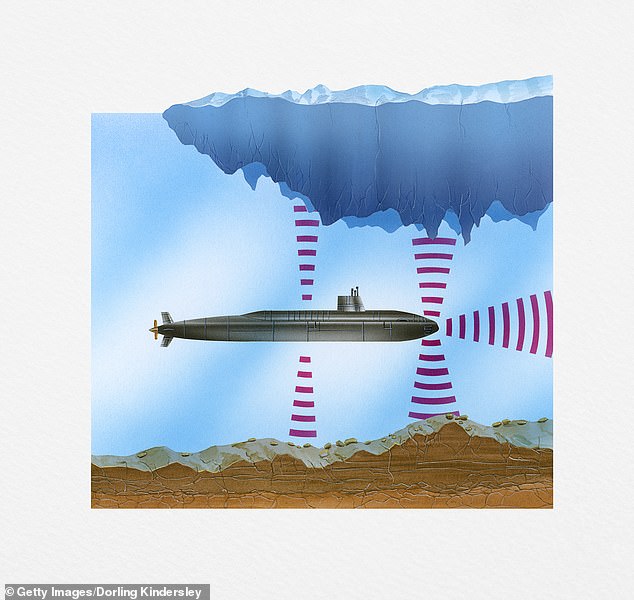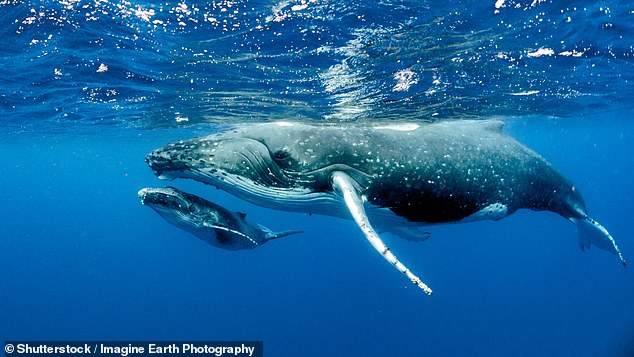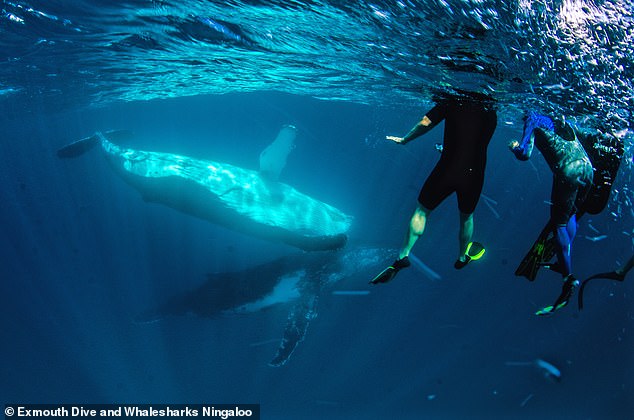Eerie video reveals terrifying sound a submarine’s SONAR makes while underwater
A viral video has revealed the terrifying sound a submarine’s sonar makes underwater after a group of divers in the Bahamas were left stunned by the deafening sound.
The eerie sound in the video is consistent with sonar, short for “sound navigation and range,” a method of determining the location of underwater objects by emitting ultrasonic waves and measuring the reflected echoes.
The clip was originally posted to YouTube in November 2021, where it racked up 1.5 million views, but was reposted to Reddit this year, racking up 55,000 approving upvotes.
It captures the moment a group of unsuspecting divers encounter sonar for the first time – as a high-pitched screech rips through the water, punctuated by clicking sounds.
This startles the guide, who turns and looks back at his companions.
‘What was that?’ the cameraman asks as the sound echoes faintly in the water around them.
A group of divers in Nassau, Bahamas, were caught off guard when they heard a submarine’s sonar for the first time

The piercing screams and clicking sounds filled the water around them, startling the guide and causing the man filming to exclaim, “What was that?”

Sonar, short for Sound Navigation and Range, refers to the emission of ultrasonic waves to detect other objects in the water

However, the high-pitched sound can have deadly consequences for marine life, especially whales
The group from Stuart Cove’s Dive Bahamas was exploring a coral reef known as the Pumpkin Patch.
The saltwater diving spot is named after the striking orange coral mushrooms.
It is characterized by nutrient-rich waters flowing from the Great Bahama Bank, making it a fitting home for marine life.
And while the deafening sound was a temporary shock to the human visitors, exposure is fatal to marine life such as whales and dolphins, as it can cause injury and even death.
Sonar systems were developed by the US Navy to find enemy submarines.
They emit slow-rolling sound waves that max out at about 235 decibels; for comparison, a rocket launch measures about 180 decibels.
These ultrasonic waves can travel hundreds of kilometers underwater and maintain an intensity of 140 decibels up to 500 kilometers away from their source.
Loud noise above 120 decibels can cause immediate damage to a person’s ears.
To escape the literally deafening sound, whales swim hundreds of kilometers, change depth quickly – causing them to bleed from the eyes and ears – and even beach themselves on beaches.
A study by researchers at the University of St. Andrews has found a possible explanation: sonar causes the same fear response as when the animals hear the sounds of killer whales.
The research was based on an observation of four whale species around the Arctic Circle. Although killer whales are most commonly found in colder waters, they are also sighted in tropical and subtropical areas such as the Bahamas.

Whales and dolphins use their own form of ‘sonar’ through a process known as echolocation, which emits clicks that bounce back to help them hunt and avoid predators

The US Navy admitted that its use of sonar has led to numerous whale deaths, leaving the animals stranded on beaches
Dolphins and whales emit their own ‘sonar’ through a process called echolocation, which helps them hunt and detect predators.
They project shrill sound beams using air spaces in their heads, which they direct at a target. The sound bounces back like a boomerang.
However, echolocation has a natural place in the ocean, while sonar does not – and the US Navy has even taken responsibility for whale deaths.
In 2002, the military admitted that their ship-based sonar had killed at least six whales that themselves became stranded and died on beaches.
Two years later, 34 whales became stranded along North Carolina’s Outer Banks while the military conducted offshore sonar training.
The National Resources Defense Council, a nonprofit environmental policy organization, has launched an ongoing campaign to protect marine life.
They won a major victory in 2016 when the Ninth Circuit court ruled that the National Marine Fisheries Service illegally approved a permit allowing the Navy to use high-intensity long-range sonar in more than 70 percent of the oceans in the world.
